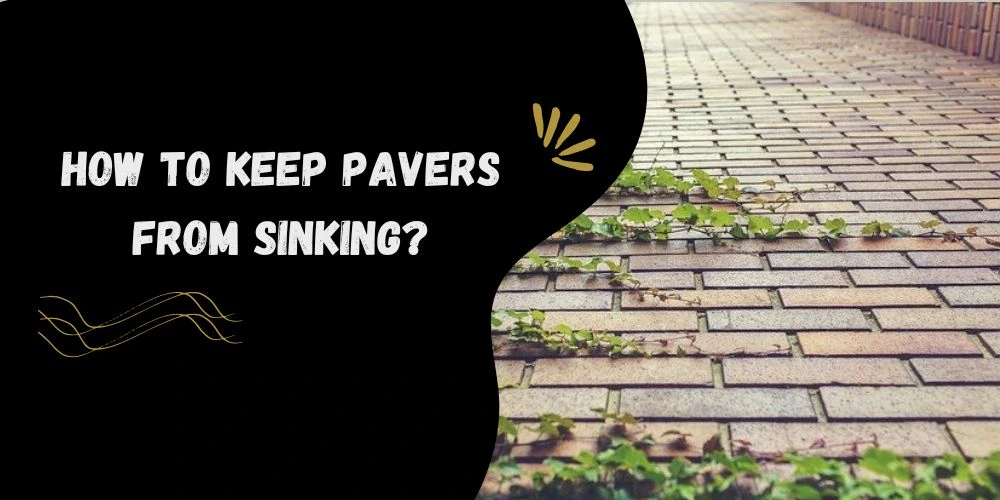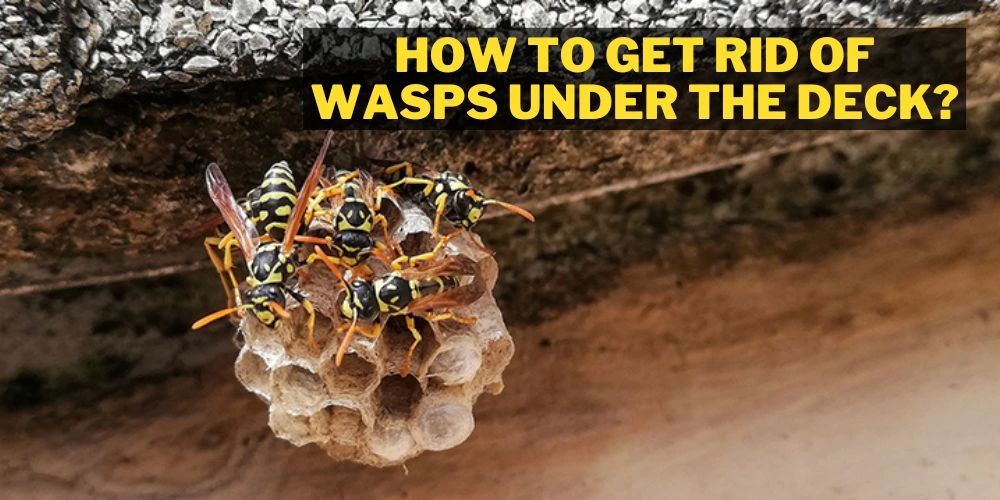When you think of a healthy lawn, you probably think green grass. However, it’s not uncommon for grass to turn yellow. There are a few different reasons why this might happen. First, grass may turn yellow if it’s not getting enough water. This is especially common in the summer when there is less rainfall.
If your grass is looking yellow and you’re wondering how to turn it green again, the solution is simple: water. Though different grasses have different watering needs, in general, grass needs about 1 to 1.5 inches of water per week. Therefore, watering deeply and less often is better for the grass than shallow watering.
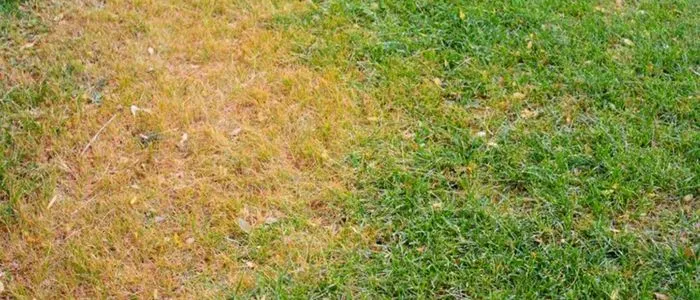
How To Turn Yellow Grass Green?
If your grass is looking yellow and unhealthy, there are a few things you can do to turn it green again. First, ensure you’re watering the grass in the morning so the sun can help evaporate any water left on the blades. Keep the edges of your lawn mower sharp. Finally, use the correct lawn care products.
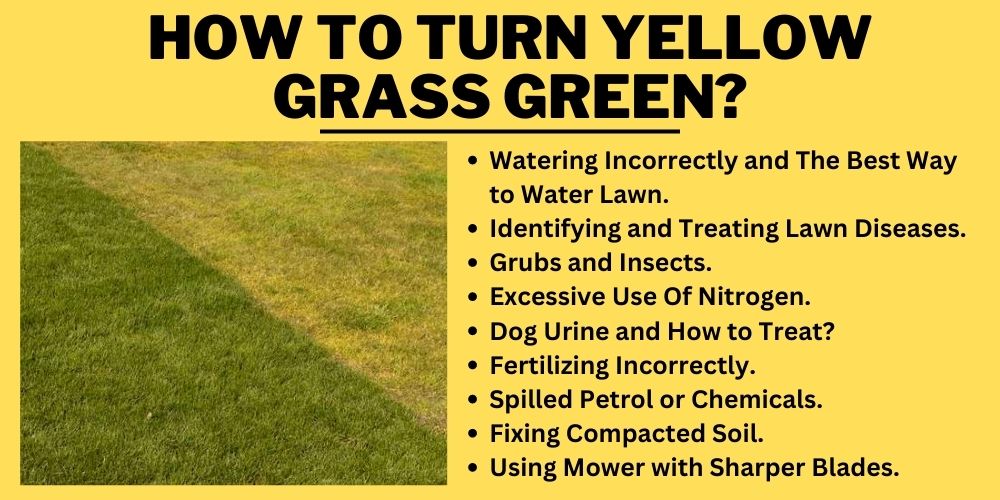
Practice proper lawn care techniques. Mowing too short and neglecting to aerate and fertilize can all lead to a yellow, patchy lawn. You should also prevent lawn disease by cutting regularly and keeping pets urine off the grass. Finally, don’t over or underwater the grass – give it just enough so it’s moist without being soggy. With a little TLC, your yellow grass will be green in no time!
Watering Incorrectly and The Best Way to Water Lawn
It’s widespread for people to incorrectly water the lawn. If you’re wondering how often to water your property, the answer is “not every day.” Unfortunately, watering your grass every day can do more harm than good. Here’s why you should avoid watering your lawn every day and what the best way to water your lawn is instead.
When you water your lawn every day, the roots of the grass won’t have a chance to grow deep into the soil. This can lead to shallow roots more susceptible to drought and heat stress. Furthermore, watering your lawn every day can encourage fungal growth and make your grass more vulnerable to disease.
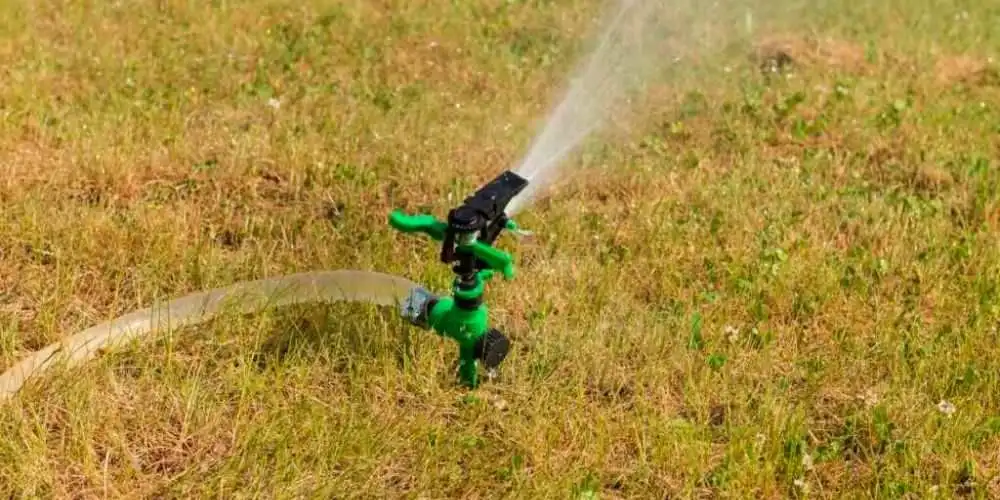
If you’re one of the many people who water their lawn incorrectly, you’re not alone. Many believe the best time to water your lawn is in the evening or early morning, but this is incorrect. The best time to water your lawn is after 6 am but before 10 am, and you should do it 2 to 3 times every week.
If you water your lawn in the evening or early morning, the sun will evaporate the water before it has a chance to reach the roots of your grass. This can cause your grass to turn yellow and eventually die.
The best way to water your lawn is to water it for almost 30 minutes or until the lawn is half inches filled. This may seem like a lot of water, but keeping your grass healthy and green is necessary.
If you have sprinklers installed on your lawn. In that case, the timing to run shall depend upon various factors such as the present temperature, the wind speed, the age of the grass, the variety of grass, and most importantly, the texture and density of the soil. Also, don’t forget to consider the size of the zone. You may watch the video below, if you have sprinkler.
If this looks complicated, as a general rule of thumb, you can set spray heads to water for 10 minutes at a time, which is perfect for most lawns. However, if you have a larger lawn, you can use rotor heads that evenly distribute water for up to 20 minutes.
Grubs And Insects
Many different types of grubs and insects can wreak havoc on your lawn. Two of the most common are the chinch bug and the sod webworm.
The chinch bug is a small, black insect that feeds on the juices of grass plants. They can quickly kill a small area of turfgrass. Chinch bugs are most active in the summer and easy to identify during this season.
The sod webworm is a small, brown moth that lays eggs in the thatch layer of turfgrass. The larvae hatched from these eggs feed on grass leaves, causing damage to the lawn, which is visible to the naked eye. Sod webworms are most active in the early fall.
Preventative insecticide applications are one of the best things a homeowner can do to protect their grass. By applying a preventative insecticide, homeowners can keep grubs and other insects from damaging their lawns.
There are a few different types of preventative insecticides that homeowners can choose from. One type of preventative insecticide is called systemic insecticide. This insecticide is applied to the soil and then taken up by the plant’s roots. The plant then transports the insecticide throughout the rest, killing insects that try to feed on it.
Another type of preventative insecticide is called contact insecticide. Contact insecticides are applied directly to the leaves of the plants. When insects come into contact with the leaves, they will die.
Excessive Use Of Nitrogen
Excess nitrogen in the soil can cause the grass to turn yellow. This is because nitrogen is a key component of chlorophyll, which gives plants their green color. When there is too much nitrogen, the chlorophyll breaks down, causing the grass to turn yellow.
Excess nitrogen can come from fertilizers, animal waste, or even the air. Too much nitrogen can harm grass, so keeping levels in check is important.
Dog Urine and How to Treat?
Dog urine on grass is a common problem for dog owners. However, the damage that dog urine can do to a lawn is often underestimated. Dog urine contains high nitrogen levels, which can burn lawn grass and cause it to turn yellow. In addition, if left untreated, dog urine can kill patches of grass and create unsightly brown spots.
How to Treat?
Dog urine on the grass is not only unsightly, but it can also kill the grass. However, if you have a dog that likes to urinate on the grass, you can take some simple steps to treat the problem.
The first step is identifying areas where your dog likes to urinate. You can observe your dog or use a black light to find the spots. Once you have identified the areas, mark them with a stake or flag, so you can easily find them again.
The next step is to treat the area with an enzyme-based cleaner. This type of cleaner will break down the urine and help to prevent further damage to the grass. Be sure to follow the directions on the cleaner and apply it liberally to the affected areas.
Finally, water the treated areas thoroughly.
Fertilizing Incorrectly and The Best Way to Fertilize Lawn
Luscious, green grass is the hallmark of a healthy lawn. But if your grass is more yellow than green, it may be due to incorrect fertilization. Lack of nitrogen is one of the main ways soil nutrients can become unbalanced, leading to yellowing grass.
There are a few ways to fix this problem. First, you can try to add nitrogen to the soil by using a fertilizer specifically designed for this purpose. You can also try to add organic matter to the soil, which will help to improve its overall health and fertility.
Finally, you may need to aerate your lawn if compaction prevents the roots from getting enough oxygen. With a little care and attention, you can get your lawn looking green and healthy in no time!
Spilled Petrol or Chemicals and How to Treat It
If your grass looks more yellow than green, it may be due to a petrol spill or chemicals. Here’s how to treat it and get your lawn back to its healthy state. Spilled petrol or chemicals can quickly kill your grass and turn your lawn yellow. If you have recently had a spill, take immediate action to protect your grass:
- Remove any affected grass clippings and debris.
- Water the area thoroughly to dilute the chemicals and prevent further damage.
- Apply a nitrogen-rich fertilizer to encourage new growth.
With some quick treatment, you can return your yellow lawn to look green in no time.
Fixing Compacted Soil
One possibility is that your soil is compacted. This means that the dirt is too tightly packed together, making it difficult for water and nutrients to reach the roots of your grass. To fix this, use a garden fork or aerator to break up the soil. This will help improve drainage and allow your grass to get the oxygen and nutrients it needs.
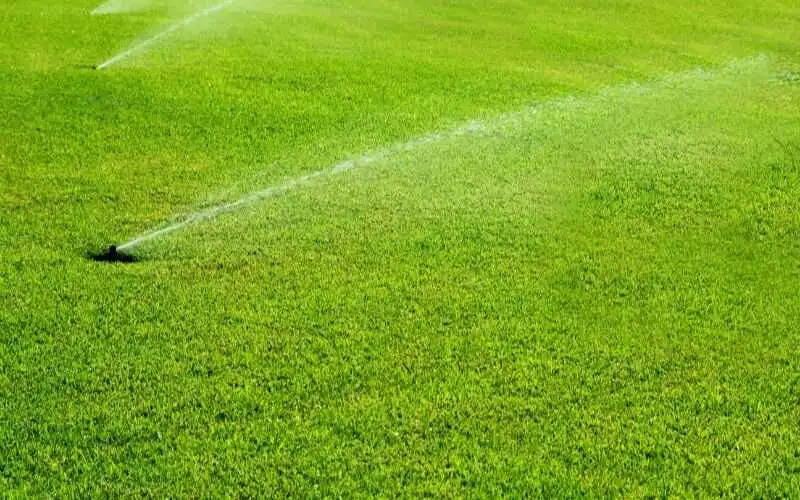
Using Mower with Sharper Blades
If your lawn is looking more like hay than grass, there are a few things you can do to get it back to being the green oasis you’ve always wanted. The first step is to ensure you’re using a mower with sharp blades.
Dull blades tear your grass rather than cut it, leaving it more susceptible to disease and pests. Once you’ve got your blades sharpened, be sure to mow regularly. Depending on your grass, you may need to mow as often as once a week or as little as every two weeks.
How do I maintain my lawn?
Mow your grass every week. This will help prevent it from getting too long and will help keep it looking neat and tidy. Use a sharp blade on your mower to avoid damaging the grass.
Remove any dead or dying grass by hand. This will help improve the overall appearance of your lawn and will also help prevent the disease from spreading. Fertilize your lawn regularly to ensure it has the nutrients it needs to stay healthy. You can do this yourself or hire a professional Lawn care company to do it for you.
Use a sprinkler in the morning. This will help your grass get the water it needs before the heat of the day sets in. Invest in weed control. Weeds can ruin the look of your lawn, so it’s important to nip them in the bud early on.
Train pets to use a small area. If you have pets, train them to use one small lawn area for their bathroom needs. This will prevent large patches of dead grass from forming.
Get the soil tested.
You May Also Find Useful: Pros and Cons of Dethatching Lawn
Frequently Asked Questions (FAQs)
Can Grass Come Back From Being Yellow?
Yes, grass can come back from being yellow. There are several reasons why grass may turn yellow, but with the right care, it can be returned to its green state. Lack of nutrients, particularly nitrogen, is a common cause of yellowing grass. Other causes include disease, pests, and stress from extreme weather conditions. With proper diagnosis and treatment, your yellow lawn can be green again in no time.
How Long Does Grass Take To Go From Yellow to Green?
The answer may depend on the type of grass and the severity of the yellowing. For example, some grasses may be yellow due to environmental stress, while others may have a disease or nutrient deficiency. Generally, it takes about two to four weeks for the grass to green up after being dormant.
Is Yellow Grass Dead or Dormant?
The answer to whether yellow grass is dead or dormant lies in the underlying cause of the discoloration. If the grass is yellow due to a nutrient deficiency, it is likely dead. However, if the grass turns yellow due to drought stress, it is most likely dormant. Dead grass will not grow even when watered, while dormant grass will begin to green up once watering resumes.
Does Yellow Grass Mean Too Much Water?
No, yellow grass does not mean too much water. There are several reasons why grass may turn yellow, including disease, nutrient deficiency, and pests. If you suspect your grass is yellowing, look for other signs of overwatering, such as puddles of water on the ground or runoff from your sprinklers.
What Is A Natural Grass Fertilizer?
A natural grass fertilizer is a product used to provide nutrients to grass and other plants. It is made from organic materials, such as plant waste and manure, and can be synthetic or organic. Natural grass fertilizers are typically more expensive than synthetic fertilizers but are also more effective at promoting growth and preventing disease.
Wrap up
These are the simple process if you want to know how to turn yellow grass green that anyone can do. By following the methods above, you can have a green lawn in no time. So what are you waiting for? Get out there and start greening up your yard!

